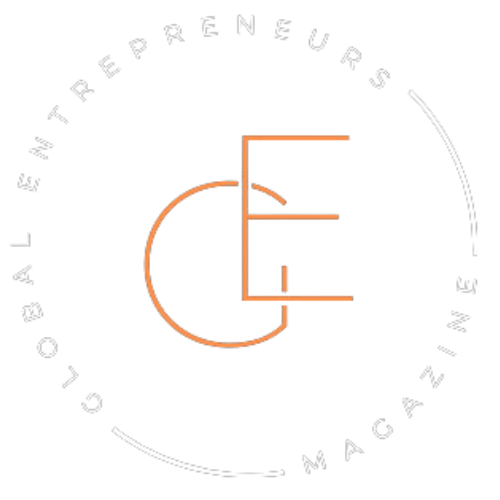She didn’t raise her voice.
She didn’t flash a title.
She just asked one question — and the room changed.
The meeting was headed nowhere. Tension buzzed between two departments, each pointing fingers, each defending their turf. Deadlines were slipping. Clients were watching. Everyone braced for another hour of posturing and polished blame.
Then Mara, the project lead, leaned in and said, “What are we not saying here?”
That question — soft on the surface, but sharp in effect — opened a floodgate. Frustrations spilled. Assumptions unraveled. Within thirty minutes, the team wasn’t just speaking more honestly — they were actually solving the problem.
No spreadsheet could’ve done that. No chain of command.
Just someone who knew how to read a room, make people feel heard, and steer a conversation toward truth.
This is what we’ve been calling “soft.”
But there’s nothing soft about the ability to diffuse tension, earn trust, and move people. It’s a skill — a powerful one — and for a long time, it’s been overlooked, especially in spaces that still value performance over presence.
So let’s stop pretending that these strengths sit on the sidelines.
Let’s talk about how empathy, intuition, active listening, and emotional fluency are quietly reshaping what power looks like in business — and how those often labeled feminine are finally being seen as what they always were: vital.
The boardroom moment no spreadsheet could predict
It should’ve been a win.
The numbers looked good. Forecasts were solid. The pitch deck had been polished to death. And yet, the investor across the table sat motionless — arms crossed, jaw tight, eyes hard.
Everyone in the room felt it. Something was off.
The founder, Alex, caught it too. But instead of pushing harder or throwing in more stats, she paused.
Then she said, “You seem hesitant. Can we talk about what’s holding you back?”
That’s when things shifted.
The investor exhaled — not with relief, but recognition. “I’ve seen similar companies over-promise on retention. You’ve got churn under control now, but what happens when you scale?”
Alex didn’t flinch. She nodded, acknowledged the concern, and shared how she’d personally interviewed thirty of their most loyal customers to understand what kept them coming back — and what still felt fragile.
That moment didn’t just save the pitch. It made the deal.
Not because the financials changed. They didn’t.
But because someone read the room, sensed the friction, and met it with clarity and calm.
That’s the part we don’t often talk about in business — the moment that doesn’t show up on a KPI dashboard but ends up steering the entire outcome.
It’s not about charisma or charm. It’s the presence to sense unspoken cues. The courage to pause when others push. The skill to name what no one else wants to touch.
And it’s often these so-called “soft” moves — the ones we’re taught to downplay — that land the hardest results.
The hidden ROI of emotional intelligence
Jason didn’t look like your typical startup CTO. He wasn’t loud. Didn’t dominate meetings. Rarely interrupted. But when his team hit a rough patch — missed deadlines, burnout creeping in, communication breaking down — he didn’t call an emergency sprint or micromanage the fixes.
He pulled each team member aside, one by one. Not for performance reviews, but conversations. How were they really doing? What was blocking them, personally and professionally? What needed to change?
People talked. Some cried. Some vented. All of them felt seen.
Three weeks later, things shifted. Not magically. Not instantly. But the team was working again — together this time. Trust came back. Ideas started flowing. Missed targets turned into new wins.
There’s no column for that in an investor report. But ask anyone on that team why they stayed during the tough months, and you’ll hear the same thing: “Jason never made us feel like numbers.”
Emotional intelligence doesn’t look like strategy on a whiteboard. But it is strategy — the kind that builds loyalty, not just output. The kind that keeps top performers from walking away. The kind that creates teams that don’t just meet metrics but surprise you with what they’re capable of.
You don’t measure it with graphs. You see it in who sticks around.
Why calling them ‘soft’ was always a misnomer

The first time Lina heard the phrase soft skills, she laughed.
She was 24, fresh out of business school, and already managing a team older than her. Her mentor told her, “It’s not your strategy that’ll get them to follow you — it’s your soft skills.” Lina thought it sounded like a consolation prize. Like a polite way of saying you don’t intimidate anyone.
Two years in, she changed her mind.
Not after a win, but after a failure.
One of her top engineers quit — no warning, no conversation, just a short email and a longer silence. In the exit interview, he said, “You’re great at everything except knowing when we’re not okay.”
That line stuck.
Lina started paying attention — not to just project timelines or code pushes, but the tone of Slack messages. The shift in body language. The moments people didn’t speak up. She asked better questions. Made space for slower answers. Stopped brushing off tension as “just stress.”
Her team got stronger. The numbers followed.
She realized then that the problem wasn’t with the skill — it was with the label. “Soft” had made it sound optional. Like frosting instead of foundation. But in reality, these skills took effort. Awareness. Restraint. Strength of a different kind.
It wasn’t about being nice. It was about being able to hold complexity — of people, pressure, personalities — without losing the room or yourself.
And there’s nothing soft about that.
What happens when women stop adapting and start leading on their own terms
For years, Priya tried to fit the mold. Lowered her voice in meetings. Practiced firm handshakes. Took feedback with a smile, even when it stung. She watched male colleagues get praised for being “decisive” while she was told to “work on confidence.”
So she adjusted. Smoothed her edges. Spoke in bullet points. Made herself smaller in all the right corporate ways.
It worked—on paper. Promotions came. So did burnout.
It wasn’t until her third leadership role, at a company in crisis, that something snapped. Not in defeat, but in defiance. She stopped trying to match anyone’s style. She stopped rehearsing to sound tough. Instead, she led how she actually led — through one-on-ones, through listening, through building a culture where people weren’t afraid to be human.
Six months in, things shifted. Retention went up. So did output. But more than that, people felt proud to show up. Because someone finally made it safe to lead without posturing.
Priya didn’t get louder. She just got real. And that’s what turned things around.
There’s a cost to constant adapting — to contorting yourself to fit a version of leadership that never saw you in the first place. But there’s power in opting out. In deciding you don’t need to prove your toughness to be taken seriously.
Some of the most effective leaders aren’t leading like men.
They’re leading like themselves.
The ripple effect in hiring, teams, and culture
When Maya stepped into her role as Head of People, the company had a culture problem no one wanted to name. On paper, things looked fine — decent Glassdoor reviews, solid onboarding, quarterly feedback surveys.
But turnover was high, especially among new hires. Meetings felt tense. Burnout hovered like fog.
So she started small.
She rewrote job descriptions to reflect the actual day-to-day, not the inflated corporate dream. She trained hiring managers to listen — not just to credentials, but to communication styles, red flags, and lived experience. She encouraged leaders to stop rewarding only the loudest voice in the room.
It didn’t spark a viral LinkedIn post. But it changed who stayed.
In the span of a year, they weren’t just hiring better people — they were keeping them. Collaboration improved. People gave honest feedback without fear. New hires didn’t feel like they had to “toughen up” to succeed. They were simply allowed to belong.
Maya didn’t push for empathy workshops or trendy well-being perks.
She just treated soft skills as non-negotiable — not a department, but a standard.
And once the culture shifted, so did the results. Not in a gimmicky, feel-good way. In the kind of way that actually sustains growth without grinding people down.
Empathy changes more than interactions.
It shapes who gets hired, who gets heard, and who gets to stay long enough to make a difference.
The power was never soft
Years later, Mara — the same project lead who once saved a room with a question — was asked what she thought made her effective.
She didn’t mention her credentials. Or her strategy. Or the accolades that had followed since.
She said, “I’ve learned to notice what people don’t say. And I don’t flinch when the room goes quiet.”
That’s the part we’ve been missing.
These aren’t backup traits or nice-to-haves. They’re leadership. The kind that steadies teams when things go sideways. The kind that turns conflict into clarity. The kind that leaves people better, not burned out.
The business world is full of noise — metrics, tactics, frameworks. But underneath it all, people still work with people. And the ability to understand, guide, and connect with them has never been soft.
It’s always been strength.
We just didn’t have the right name for it.




